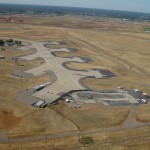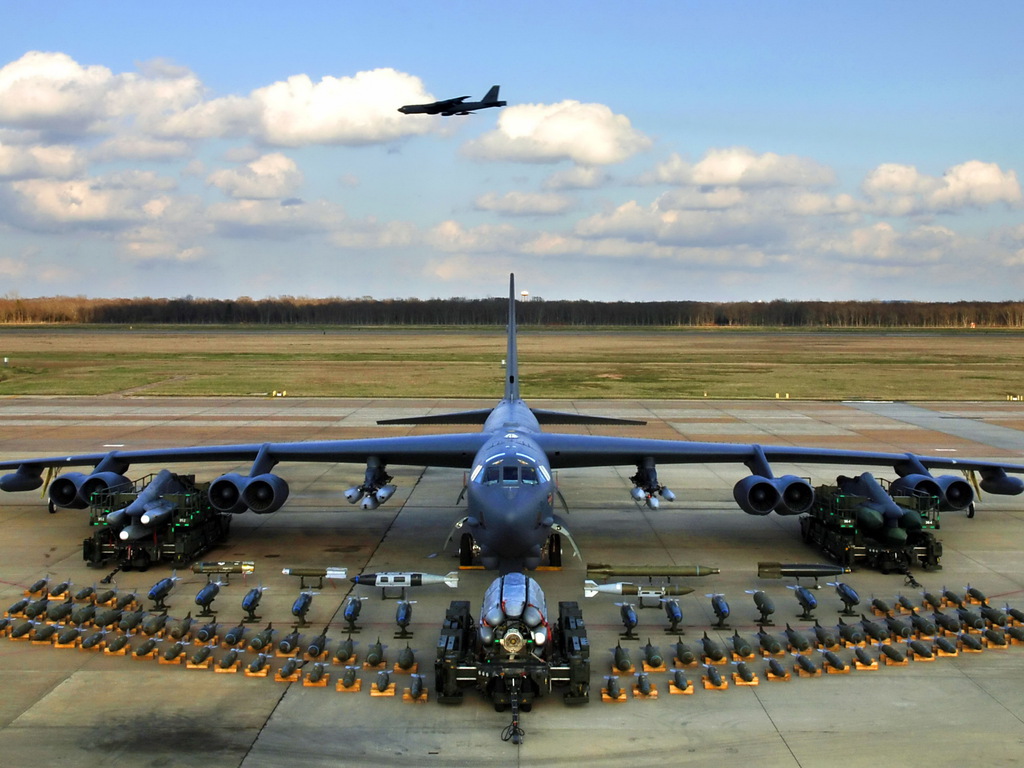USAF Strategic Air Command 320th Bomb Wing, Mather AFB, California.
If you thought that the radio-controlled arena only concerned small cars, rotor-drones and small airplanes, you would be wrong.
When I was the Sergeant in charge of my EVOC section (Emergency Vehicle Operations Course), we were stationed at Mather Airport on the former SAC B-52 (the 320th Bombardment Wing) alert pad. This was a vast expanse of concrete and surrounding  asphalt, more than large enough to fly a radio controlled (RC) plane (see the photo to the right; click to embiggen). Of course, one of my instructors talked me into getting a cheap battery-powered RC plane, the idea of which sounded like great fun.
asphalt, more than large enough to fly a radio controlled (RC) plane (see the photo to the right; click to embiggen). Of course, one of my instructors talked me into getting a cheap battery-powered RC plane, the idea of which sounded like great fun.
It was great fun for about two minutes, until I promptly crashed my plane. Not just a small crash upon landing but a take-the-wings-rudder-and-landing-gear-right-off kind of crash. An “into small pieces” kind of crash.
A return trip to the cool RC store on Folsom Boulevard and I had the appropriate replacement parts. Just for good measure I bought some backups to the replacement parts. That turned out to be an excellent idea. Because the microsecond the repaired plane took off, I banked the plane and nosedived it right into the concrete again. This time I needed a new engine and all the other replacement parts, plus a new tail.
Not yet having realized this RC thingie might not be for me, and having replaced all the parts, I also bought a new engine, propeller and battery pack. The only part not yet broken was the fuselage. Yet. My third flight that week saw me take off, fly far enough to begin to lose radio contact, turn around to regain contact, and then completely screw the pooch on the controller. Suffice to say the plane crashed with such accelerative force, splendor and finality that even I concluded that RC planes should not be entrusted to me, unless the owner wished to see them fly into minute and irretrievable pieces. I finally figured out that I could operate the controls just fine if the plane was flying away from me, because I could envision myself sitting in the cockpit. But turn the plane around and I couldn’t make my brain and fingers realize that the controls now had to be operated “backwards.” I was therefore clearly over my limited wheelhouse RAM capacity.
Below, you will witness the RC world pushed to a staggering degree. A German man named Peter Michel built a radio controlled replica of a Singapore Airlines Airbus A-380 commercial jet (the largest commercial passenger jet in the world) and had it flown by a man named Michael Brauer. The weight of this RC model is 156 pounds, and it has a 17.3 foot wingspan. Its fuel capacity is 2.6 gallons, with a consumption rate of .31 gallons a minute. Propulsion is via four JETCAT P 120 Je 12kp Standschub engines. Yes. They are real jet engines, in miniature.
Click the video and prepare to be amazed. If at any point you don’t smile and larf out loud, I’ll be highly surprised.
And a beautiful landing to boot. But hell, no pressure — considering the replica required hundreds of assembly hours and thousands of dollars.
I find that model and its ability to fly completely breathtaking.
BZ



